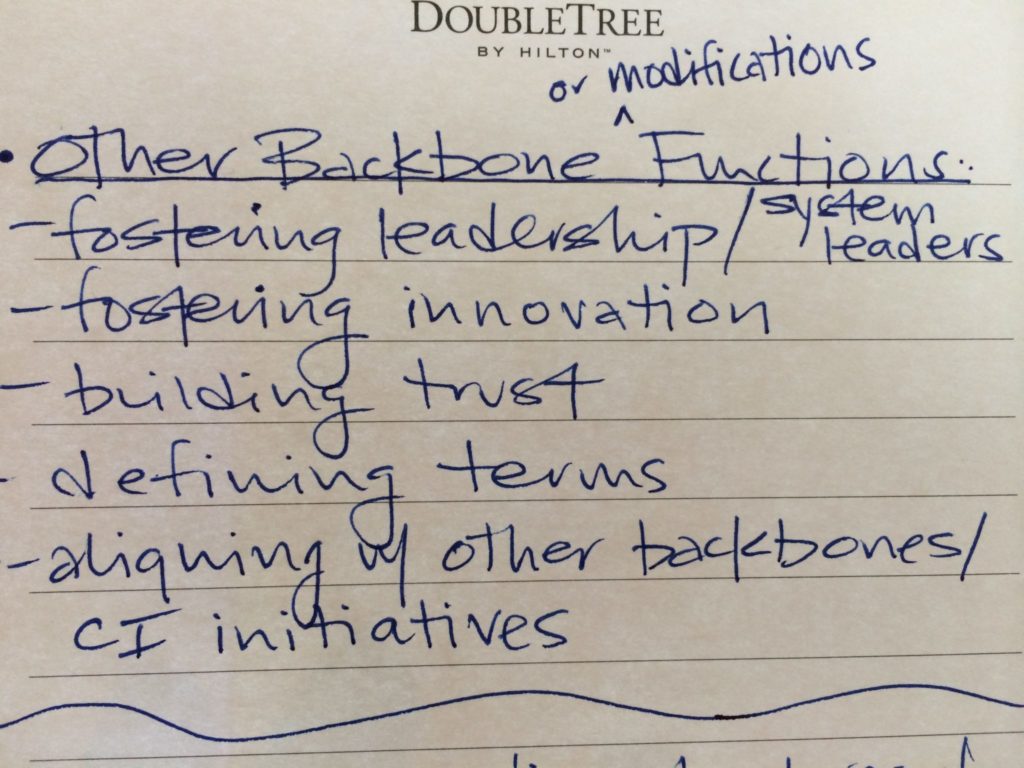I attended the Collective Impact Forum‘s Champions for Change workshop last month, and it got me thinking about how we structure collaborative social sector initiatives, especially here in Texas.
Wait, buzzword alert. Surely you’ve heard this term, collective impact, right? Everyone’s throwing it around lately. John Kania and Mark Kramer with FSG wrote a landmark article in the Stanford Innovation Review in 2011 to that put a name to comprehensive community initiatives that some communities were embarking on and seeing real results from. As good consultants do, they analyzed and synthesized and developed definitions:
Collective impact is when a group of people or organizations come together to tackle a tough problem, and it has five conditions:
1. A common agenda;
2. Shared measurement;
3. Mutually reinforcing activities;
4. Continuous communication; and
5. A strong backbone – a team dedicated to orchestrating the work of the group.
If you want more on collective impact, here’s a nice video.
Back to the workshop. A big question raised was about the sustainability of creating a new backbone organization for each emerging collective impact initiative. Especially in a community with upwards of 6,000 non-profits (thanks Greenlights for a great report on Austin’s non-profit sector), sustainability is a real concern.
So here’s a quick quiz. Which of the following structures constitutes a backbone structure for supporting a collective impact initiative?
- Example A: A local government agency funds the start-up costs of an initiative through a planning grant; the agency will continue to support some parts of the initiative with dedicated funding and will partner with a new community-based organization to implement the rest.
- Example B: A regional quasi-government agency sponsors an initial planning process to develop a shared agenda; then shares the administrative functions of supporting the ongoing initiative through shared responsibility with planners from another government agency as well as support from an existing collaboration of service providers and community leaders.
- Example C: Multiple government agencies fund a coalition to support a strategic work plan; that coalition hires staff and/or consultants to achieve the backbone functions.
- Example D: Non-profit organizations form a membership organization to advance a common agenda and scale their efforts; they hire consultants and trainers to support backbone functions and ongoing activities.
The answer, of course? All of the above – these are real-life examples from our work. Each initiative built on its strengths and assets to achieve multiple backbone functions. Let’s look at the areas in which the Collective Impact forum has defined backbone functions:
1. Guide vision and strategy
2. Support aligned activities
3. Establish shared measurement practices
4. Build public will
5. Advance policy
6. Mobilize funding
The photo accompanying this post offers some additional backbone functions we brainstormed at the workshop:
• Fostering leadership, especially for system leaders
• Fostering innovation
• Building trust
• Defining terms
• Aligning with other backbone initiatives and collective impact initiatives
Sometimes, resources and organizational support align to be able to support one backbone organization or program within a larger organization (The E3 Alliance and United Way for Greater Austin’s Success by 6 come to mind in Central Texas). But creating a new organization can be overwhelming to system leaders trying to get an initiative up and running, and not always necessary. The first step is acknowledging that some kind of backbone support is critical to a successful collective impact initiative. But how we get there? That’s when it’s time to get creative. Thinking in terms of the functions of not one backbone organization but a group of functions that multiple organizations can support is likely a more practical and efficient way to get started.
Can you think of other critical backbone functions? Which of these do you want to know more about? Do you have examples of creative backbone structures? Need help designing one? Contact us anytime, or drop us a note via Facebook or Twitter!

